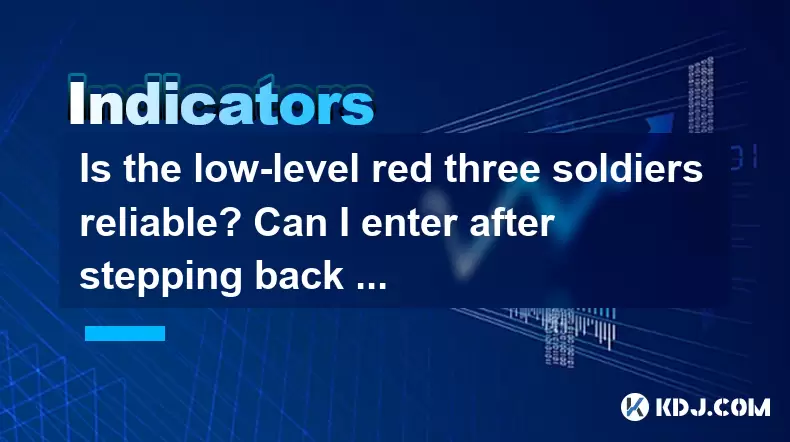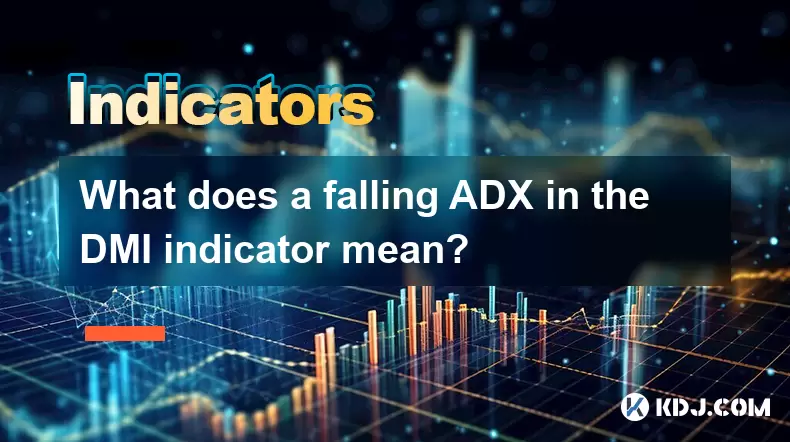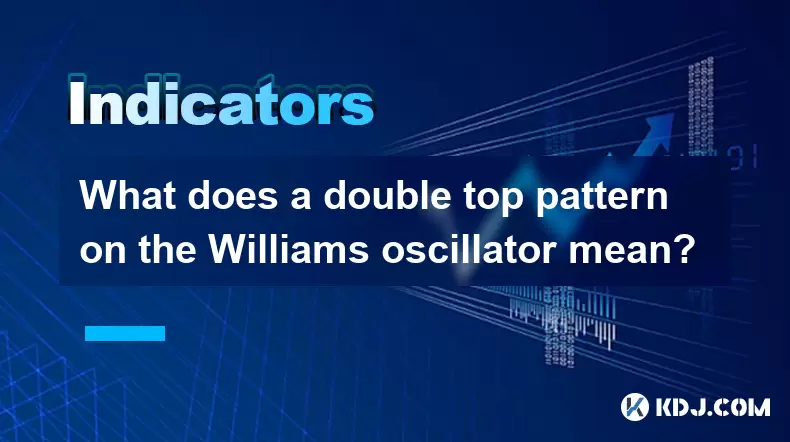-
 Bitcoin
Bitcoin $116700
0.24% -
 Ethereum
Ethereum $3973
4.34% -
 XRP
XRP $3.283
7.68% -
 Tether USDt
Tether USDt $1.000
0.01% -
 BNB
BNB $789.8
2.27% -
 Solana
Solana $176.2
3.31% -
 USDC
USDC $0.9999
0.00% -
 Dogecoin
Dogecoin $0.2238
5.14% -
 TRON
TRON $0.3389
-0.51% -
 Cardano
Cardano $0.7907
4.03% -
 Stellar
Stellar $0.4527
10.02% -
 Hyperliquid
Hyperliquid $41.07
4.27% -
 Sui
Sui $3.794
1.77% -
 Chainlink
Chainlink $19.49
10.40% -
 Bitcoin Cash
Bitcoin Cash $580.9
0.74% -
 Hedera
Hedera $0.2617
4.32% -
 Avalanche
Avalanche $23.41
3.67% -
 Ethena USDe
Ethena USDe $1.001
-0.03% -
 Litecoin
Litecoin $122.4
1.38% -
 Toncoin
Toncoin $3.364
1.49% -
 UNUS SED LEO
UNUS SED LEO $8.988
0.37% -
 Shiba Inu
Shiba Inu $0.00001295
2.82% -
 Uniswap
Uniswap $10.62
5.75% -
 Polkadot
Polkadot $3.922
4.46% -
 Dai
Dai $1.000
0.01% -
 Bitget Token
Bitget Token $4.494
2.15% -
 Monero
Monero $268.0
-1.30% -
 Cronos
Cronos $0.1523
3.68% -
 Pepe
Pepe $0.00001127
4.43% -
 Aave
Aave $285.4
4.85%
Is the low-level red three soldiers reliable? Can I enter after stepping back on the 5-day line?
The low-level red three soldiers pattern signals a bullish reversal, especially reliable post-downtrend with increasing volume; consider entering trades on pullbacks to the 5-day MA.
Jun 01, 2025 at 11:42 am

Understanding the Low-Level Red Three Soldiers Pattern
The low-level red three soldiers is a bullish reversal pattern in technical analysis that signals a potential end to a downtrend and the beginning of an uptrend. This pattern consists of three consecutive bullish candlesticks that open within the previous candle's real body and close higher than the previous candle's close. Each candle should ideally have a small or no upper shadow, indicating strong buying pressure.
The reliability of this pattern depends on several factors, including the context of the market, the volume during the formation of the pattern, and subsequent price action. It is generally considered more reliable when it appears after a significant downtrend and is accompanied by increasing volume. However, no pattern is foolproof, and traders should use additional indicators and analysis to confirm the signal.
The Role of the 5-Day Moving Average
The 5-day moving average (5-day MA) is a short-term trend indicator that smooths out price data to identify the direction of a trend. It is calculated by taking the average of the closing prices of the last five trading days. The 5-day MA is often used by traders to determine short-term support and resistance levels.
When considering entering a trade after a pullback to the 5-day MA, it's essential to understand that this line can act as a dynamic support level. A pullback to this line after the formation of a bullish pattern like the red three soldiers could indicate a healthy correction within an uptrend, offering a potential entry point for traders.
Evaluating the Reliability of the Low-Level Red Three Soldiers
To evaluate the reliability of the low-level red three soldiers pattern, traders should consider several key factors:
- Market Context: The pattern is more reliable when it occurs after a prolonged downtrend, as it signals a potential shift in market sentiment.
- Volume: Increasing volume during the formation of the pattern can confirm the strength of the bullish move.
- Confirmation: Additional bullish signals, such as a bullish divergence in momentum indicators or a breakout above a key resistance level, can increase the reliability of the pattern.
- Subsequent Price Action: The price should continue to move higher after the pattern's formation. A failure to do so could indicate a false signal.
Entering a Trade After a Pullback to the 5-Day MA
Entering a trade after a pullback to the 5-day MA following the formation of a low-level red three soldiers pattern can be a strategic move. Here are the steps to consider:
- Identify the Pattern: Confirm that the low-level red three soldiers pattern has formed on the chart.
- Monitor the Pullback: Watch for the price to pull back to the 5-day MA. This pullback should be orderly and not break below significant support levels.
- Check Additional Indicators: Use other technical indicators, such as the Relative Strength Index (RSI) or Moving Average Convergence Divergence (MACD), to confirm the bullish sentiment.
- Set Entry and Exit Points: Determine your entry point at or near the 5-day MA. Set a stop-loss order below a recent swing low to manage risk. Identify potential profit targets based on resistance levels or Fibonacci retracement levels.
- Execute the Trade: Once all conditions are met, enter the trade at your predetermined entry point.
Risk Management and Position Sizing
Effective risk management is crucial when trading based on technical patterns like the low-level red three soldiers and pullbacks to the 5-day MA. Here are some key considerations:
- Position Sizing: Determine the size of your position based on your overall trading capital and risk tolerance. A common rule is to risk no more than 1-2% of your trading capital on any single trade.
- Stop-Loss Orders: Always set a stop-loss order to limit potential losses. Place the stop-loss below a recent swing low or a key support level.
- Profit Targets: Set realistic profit targets based on technical analysis. Consider using Fibonacci retracement levels or previous resistance levels as potential targets.
- Monitor the Trade: Continuously monitor the trade and be prepared to adjust your stop-loss or take-profit levels based on market conditions.
Case Studies and Examples
To better understand the application of the low-level red three soldiers pattern and the 5-day MA, let's look at a couple of case studies:
- Case Study 1: In a hypothetical scenario, a stock experiences a significant downtrend, followed by the formation of a low-level red three soldiers pattern. The price then pulls back to the 5-day MA, where it finds support and resumes its uptrend. A trader enters the trade at the 5-day MA and sets a stop-loss below the recent swing low, resulting in a profitable trade.
- Case Study 2: In another scenario, a cryptocurrency forms a low-level red three soldiers pattern after a downtrend. However, the price fails to pull back to the 5-day MA and instead breaks below a key support level. A trader who entered the trade based on the pattern without waiting for the pullback to the 5-day MA would likely face a loss.
Frequently Asked Questions
Q: Can the low-level red three soldiers pattern be used on different timeframes?
A: Yes, the low-level red three soldiers pattern can be applied to various timeframes, from intraday charts to weekly charts. However, the reliability of the pattern may vary depending on the timeframe. Shorter timeframes may produce more false signals, while longer timeframes may offer more reliable signals but fewer trading opportunities.
Q: How can I improve the accuracy of the low-level red three soldiers pattern?
A: To improve the accuracy of the low-level red three soldiers pattern, consider using additional technical indicators for confirmation, such as the RSI or MACD. Also, pay attention to the volume during the formation of the pattern and the overall market context. Combining multiple indicators and analyzing the broader market conditions can help increase the reliability of the pattern.
Q: What other patterns should I watch for in conjunction with the low-level red three soldiers?
A: In addition to the low-level red three soldiers, you can watch for other bullish reversal patterns such as the morning star, bullish engulfing, or hammer. These patterns can provide additional confirmation of a potential trend reversal. Also, consider watching for bullish continuation patterns like the bullish flag or pennant, which can indicate that an uptrend is likely to continue after a consolidation period.
Q: Is it necessary to wait for a pullback to the 5-day MA before entering a trade?
A: While waiting for a pullback to the 5-day MA can provide a more favorable entry point and potentially improve the risk-reward ratio, it is not always necessary. If the price continues to move higher after the formation of the low-level red three soldiers pattern without pulling back to the 5-day MA, you may still consider entering the trade. However, be cautious and use additional indicators to confirm the bullish sentiment before entering without a pullback.
Disclaimer:info@kdj.com
The information provided is not trading advice. kdj.com does not assume any responsibility for any investments made based on the information provided in this article. Cryptocurrencies are highly volatile and it is highly recommended that you invest with caution after thorough research!
If you believe that the content used on this website infringes your copyright, please contact us immediately (info@kdj.com) and we will delete it promptly.
- Roman Storm, Funding Effort, and the Looming Defense Retrial: A New York Minute on the Tornado Cash Case
- 2025-08-09 02:50:14
- Crypto's Wild Ride: XRP, Dogecoin, and the Altcoin Surge You Can't Ignore
- 2025-08-09 02:50:14
- Elon Musk, Bitcoin, and the Enduring Power of Approval: A Crypto Love Story?
- 2025-08-09 03:50:15
- Ruvi AI: The Next Big Thing After Ripple on CoinMarketCap?
- 2025-08-09 03:50:15
- Floki Price Surges: Elliott Wave and Fibonacci Setups Point to Potential Gains!
- 2025-08-09 02:30:16
- Pepe Price, RTX (Remittix?) & the $10K ETH Dream: NYC Crypto Chatter
- 2025-08-09 02:30:16
Related knowledge

What does it mean when the TRIX indicator suddenly diverges downward after a long period of convergence?
Aug 09,2025 at 12:56am
Understanding the TRIX Indicator in Cryptocurrency TradingThe TRIX indicator, or Triple Exponential Average, is a momentum oscillator used in technica...

Why is the rise limited after a MACD bottoming divergence?
Aug 09,2025 at 12:07am
Understanding MACD Bottoming Divergence in Cryptocurrency TradingThe MACD (Moving Average Convergence Divergence) is a widely used technical indicator...

What does it mean when the OBV continues to rise but the price is trading sideways?
Aug 08,2025 at 10:35pm
Understanding On-Balance Volume (OBV)On-Balance Volume (OBV) is a technical indicator that uses volume flow to predict changes in stock or cryptocurre...

What does a falling ADX in the DMI indicator mean?
Aug 09,2025 at 03:16am
Understanding the ADX and DMI Indicator FrameworkThe DMI (Directional Movement Index) is a technical analysis tool developed by J. Welles Wilder to id...

What does a double top pattern on the Williams oscillator mean?
Aug 09,2025 at 02:36am
Understanding the Williams %R OscillatorThe Williams %R oscillator is a momentum indicator developed by Larry Williams to identify overbought and over...

What is a nonce and how is it used in Proof of Work?
Aug 04,2025 at 11:50pm
Understanding the Concept of a Nonce in CryptographyA nonce is a number used only once in cryptographic communication. The term 'nonce' is derived fro...

What does it mean when the TRIX indicator suddenly diverges downward after a long period of convergence?
Aug 09,2025 at 12:56am
Understanding the TRIX Indicator in Cryptocurrency TradingThe TRIX indicator, or Triple Exponential Average, is a momentum oscillator used in technica...

Why is the rise limited after a MACD bottoming divergence?
Aug 09,2025 at 12:07am
Understanding MACD Bottoming Divergence in Cryptocurrency TradingThe MACD (Moving Average Convergence Divergence) is a widely used technical indicator...

What does it mean when the OBV continues to rise but the price is trading sideways?
Aug 08,2025 at 10:35pm
Understanding On-Balance Volume (OBV)On-Balance Volume (OBV) is a technical indicator that uses volume flow to predict changes in stock or cryptocurre...

What does a falling ADX in the DMI indicator mean?
Aug 09,2025 at 03:16am
Understanding the ADX and DMI Indicator FrameworkThe DMI (Directional Movement Index) is a technical analysis tool developed by J. Welles Wilder to id...

What does a double top pattern on the Williams oscillator mean?
Aug 09,2025 at 02:36am
Understanding the Williams %R OscillatorThe Williams %R oscillator is a momentum indicator developed by Larry Williams to identify overbought and over...

What is a nonce and how is it used in Proof of Work?
Aug 04,2025 at 11:50pm
Understanding the Concept of a Nonce in CryptographyA nonce is a number used only once in cryptographic communication. The term 'nonce' is derived fro...
See all articles

























































































